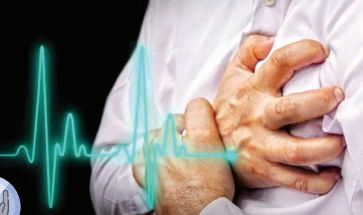Cardiovascular issues occur during the winters
It has been seen that more cardiovascular issues occur during the winter. Cold weather is the most common health risk you encounter in Delhi’s winter which is harsh and the drop in temperature can impact your health, specifically your heart, in ways you may not expect.
Seasonal variation in morbidity and mortality due to cardiovascular disease is linked with multiple risk factors such as temperature, physical activity, air pollution, infections, and food habits.
Scientific research finds an up rise in cardiac events during the winter holiday season. A study published in American Heart Association reported that more cardiac deaths occur on December 25 than on any other day of the year; the second largest number of cardiac deaths occurs on December 26, and the third largest number occurs on January 1.
Figures in India are similar. The main reason behind this phenomenon – Our heart and blood vessels are always adapting to our environment, and to what is going on inside the body, to keep blood flowing so that different parts of the body get the oxygen and nutrients they need. When we are cold, our nervous system springs into action to stop our core body temperature dropping and to keep our vital organs working. The cold causes blood vessels to contract. This can raise your blood pressure and increase your risk of heart attack and stroke.
The cold weather makes it difficult to keep the body’s temperature maintained and lose heat quickly which leads to hypothermia which can damage the muscles of the heart. The blood vessels narrow in your skin and fingers and toes, so that less heat is lost. But this narrowing (called ‘vasoconstriction’) creates more pressure on the rest of the circulation, meaning the heart has to work harder to pump blood around the body, increasing heart rate and blood pressure. The extra strain can lead to heart symptoms for people who have an existing condition, especially during exercise. People with angina may experience a worsening in their symptoms during the winter, or find that they are less able to be physically active when it’s cold. Angina, or chest pain due to coronary heart disease can worsen in winter when coronary arteries constrict in the cold.
Hypertension: Seasonal influence on arterial blood pressure has been demonstrated by various studies based on single or repeated measurements among adults, the elderly, and children as well as healthy and hypertensive subjects. In all of these studies, both systolic and diastolic mean blood pressures show a seasonal peak during winter Another main risk factor is oxygen requirement – In the winter, the oxygen density in the atmosphere becomes low. Hence, the oxygen demand of the heart increases. Due to vasoconstriction (narrowing of the artery) and decreased temperature, the flow of blood is restricted around the heart so a reduced amount of oxygen reaches the heart and this demand-supply mismatch may cause a heart attack. It is not just the elderly who run the risk of taxing their heart in the winter, but people of all ages. So, be careful!
Weight management:
Weight management is a concern for everyone today, as every one of us makes New Year’s resolutions. Every Jan. 1, millions of people join gyms or start exercise programs as part of their New Year’s resolution to get in shape, and many may overexert themselves too soon. If you have a heart condition or risk factors for heart disease like high cholesterol and high blood pressure, talk to your doctor about what may be appropriate for you before you jump on the treadmill. Warning signs and symptoms
• Acute (severe) chest pain is the most common warning sign of heart attacks. Other symptoms include:
• Nausea or vomiting
• Dizziness
• Shortness of breath
• Pain, numbness or tingling in your jaw, back, neck or shoulders
• Cold sweat
• Sensation of heartburn
• Sudden fatigue
The way forward
Many elderly people who have the habit of getting up as early as 3 am, taking a bath and then go for morning walks. And seemingly no argument or logic can change them, as they say this has been their routine since decades. But they are forgetting that 50 years back they were in 30s and their 40s and their heart was in different shape and condition. The ageing wrinkles on the skin are easily visible but on the heart and vessels supplying the heart are never seen or felt from outside. So it is in the best interest to:
• Maintain a healthy diet, get regular aerobic exercise and reduce stress.
• Manage heart disease risk factors such as high blood pressure, diabetes, abnormal cholesterol, and tobacco use.
• Protect yourself from the cold temperature and elements by dressing in layers and wearing appropriate clothing.
• If you already have cardiovascular disease, avoid strenuous activities, such as gardening and even walking the dog for a long distance.
• If you experience shortness of breath or chest discomfort, especially with activity, seek medical attention immediately to rule out a heart or blood vessel related problem.
• Invest in a static cycle and use this for graduated workout which is as a good cardio-vascular activity compared to the treadmill as it does not put pressure on the knee and joints.
• This is much better than the treadmill and definitely safer than walking in the park at 5 am.
• So if you have a heart condition, it’s important to stay warm in winter. Keeping your heart healthy all year can help you stay in the best possible shape when winter rolls around. Listen to your body and if you feel different, see your physician.



